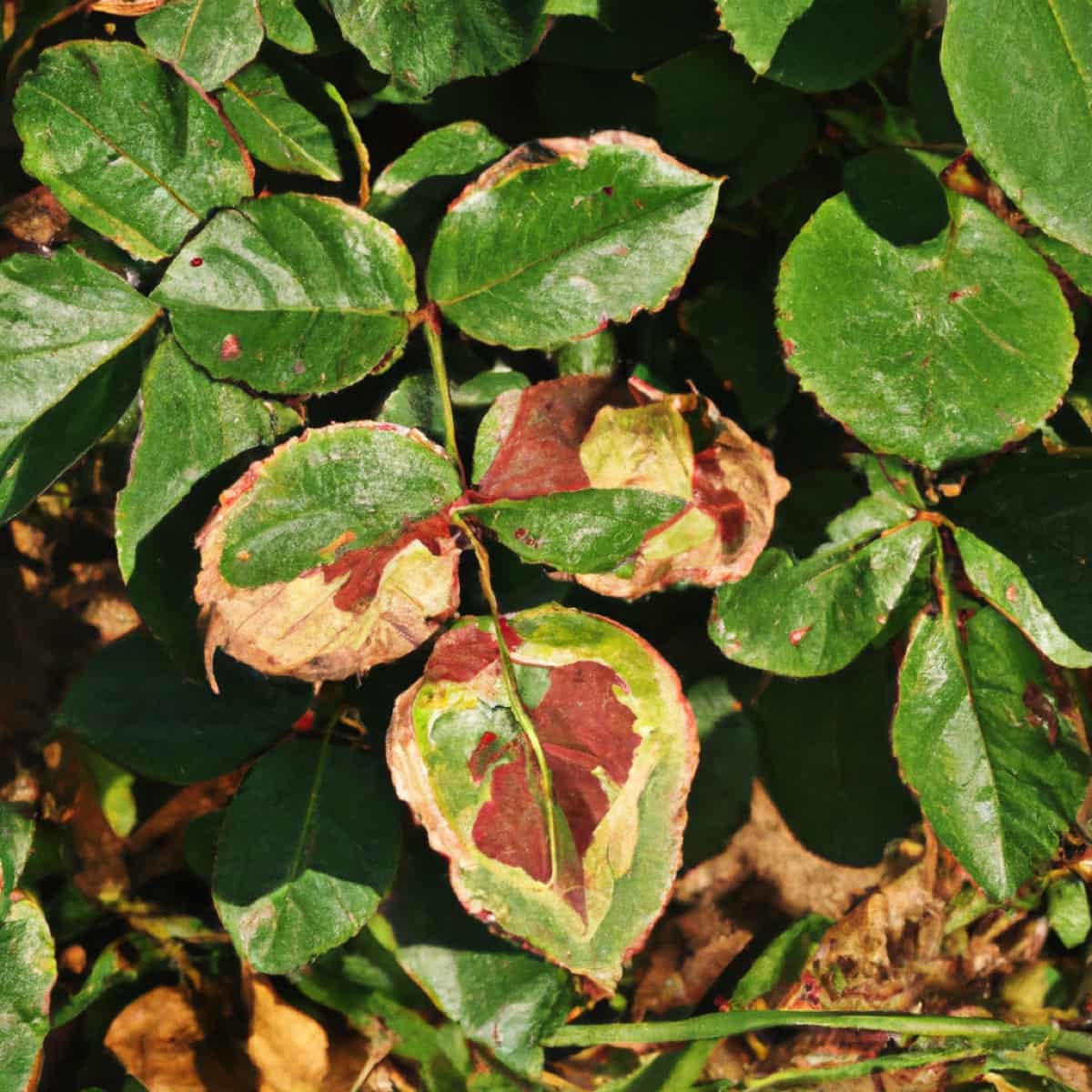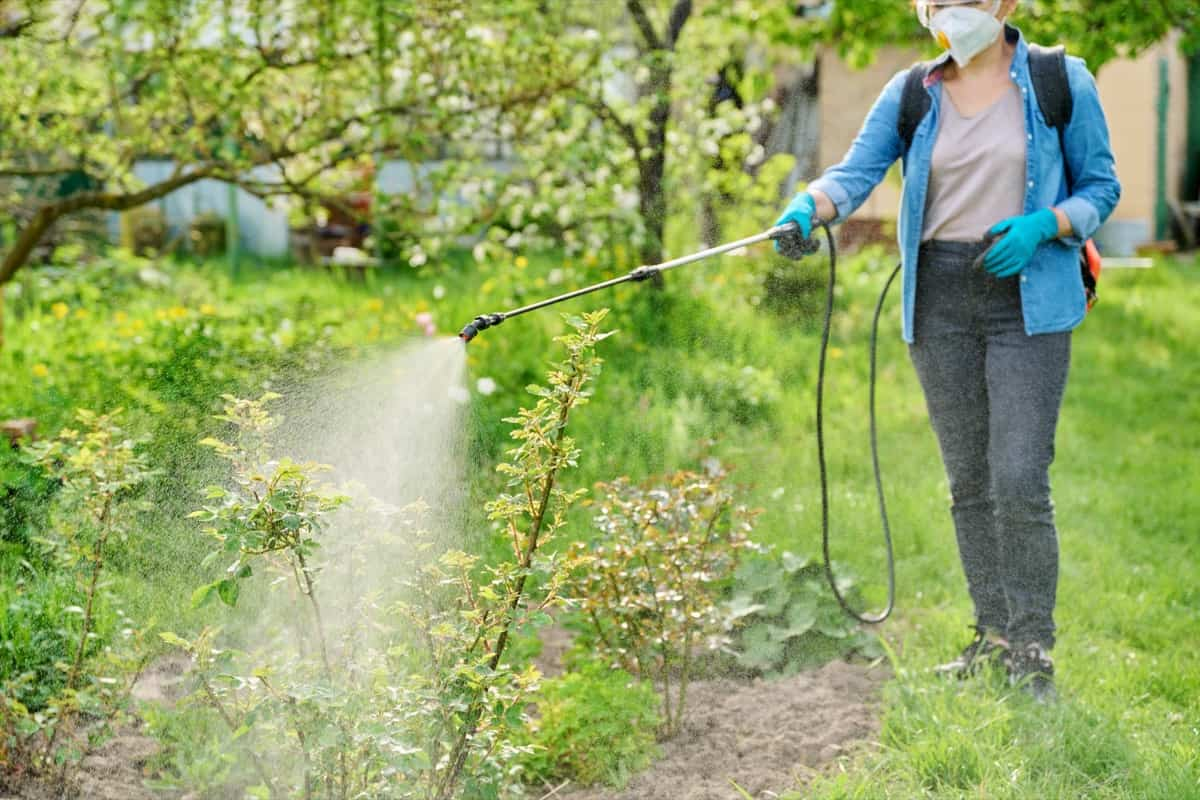Welcome to our blog post on Common Rose Plant Diseases! Rose plants, known for their magnificent flowers, can bring beauty to any garden. However, they are also susceptible to many diseases that can damage plants and make them unattractive. This blog post aims to discuss 10 of the most common rose diseases, including their symptoms, best treatments, prevention, and management. So, buckle up to explore these rose plants’ ten most common diseases.

Common Rose Plant Damaging Diseases
Important Points to Identify and Manage Diseases in Rose Plants for Beginners
- Identifying the disease: The first step is identifying the disease infesting your rose plant so that you can approach it with the most effective control method.
- Regular Monitoring: Monitor your rose plants regularly for signs of diseases. This will help you to identify an infestation early when it is easier to control.
- Sanitation: Remove the diseased plants and burn them.
- Natural Control: Several natural control methods can help to manage diseases. These include plant extracts, essential oils, composting, and organic fungicides.
- Chemical Control: If natural controls are ineffective, use fungicides as a last resort, and follow the label instructions and dosage carefully.
Rust Disease in Rose Plant
Disease Symptoms by Phragmidum mucronatum: Mango Rust is a common disease characterized by distinctive Rusty-Orange Lesions on the surface of leaves. It causes major leaf damage, chlorosis, wilt, and premature leaf drop. It leads to defoliation, decreased flower production due to the dropping of affected flowers, and death. It ultimately weakens the rose plants causing stunted growth and dieback symptoms.
Survival and Spread: The rust fungus spreads in the form of powdery spores showing a rusty appearance. The spores cause secondary infections during temperatures between 15-25°C and high humidity. Alternate host Brambles, wet leaves, dense foliage, and plant stress create congenial conditions for spreading disease.
Treatment, Maintenance, and Control Measures: Spray neem, garlic, and turmeric plant extract with antifungal properties or tea tree, clove, and cinnamon oils. Use vermicompost, organic mulch, resistant varieties, drip irrigation, and monitor the plants regularly. Practice plant spacing, sanitation, pruning, weeding, and early morning irrigation. Spray wettable sulfur, carboxin, or mancozeb as a last option. And encourage natural predators such as mites and nematodes.
Dieback Disease in Rose Plant
Disease Symptoms by Diplodia Rosarum: Dieback, caused by a fungus, primarily infects woody tissues and vascular bundles, obstructing water and nutrient flow. It results in progressive decline, discoloration, wilting, dieback symptoms, and dark brown to black lesions on infected stems. These lesions often have a cracked or sunken appearance and may be accompanied by gumming or exudation.
Survival and Spread: The pathogens reproduce and survive in fallen leaves, stems, and other plant debris. High humidity and 25-30°C temperature create favorable conditions for spore germination and fungal growth, while poor plant nutrition and stagnant air can predispose the rose plants to infection.
Treatment, Maintenance, and Control Measures: Spray Carbendazim, Mancozeb, Chlorothalonil, Difolatan, COC, Cyprodinil, Azoxystrobin, Propiconazole, or Tebuconazole to control the fungus spread or Apply the Chaubatia paste on the pruned parts of the plant.
Downy Mildew Disease in Rose Plant
Disease Symptoms by Peronospora Sparsa: This disease is characterized by downy mildew-like symptoms on rose plants’ leaves, stems, and flowers. Initially, it appears as pale green to yellowish spots on leaves. The spots enlarge and show a fuzzy appearance. The leaves may curl, develop reddish or purplish discoloration, and eventually lead to defoliation. Other symptoms include yellowing, necrosis, premature leaf drop, and distortion.
Survival and Spread: Humidity of >85% and temperature between 15-25°C are conducive for zoospore germination and fungal growth. Free water on the leaf surfaces is favorable for germination and infection. High plant density and poor air circulation favor the disease. Plants under stress due to pruning cuts, wounds, injuries, and mechanical damage are more susceptible.
In case you missed it: Rose Rust Disease Management: Symptoms, Treatment, Chemical, Biological, and Organic Control

Treatment, Maintenance, and Control Measures: Spray Captan, Thiram, Carbendazim, Mancozeb, Dithane, Chlorothalonil, Azoxystrobin, Propiconazole, or Tebuconazole to control the fungus spread.
Black Spot Disease in Rose Plant
Disease Symptoms by Diplocarpon Rosae: The infected leaves develop characteristic black spots with feathery margins, surrounded by yellowing or browning tissue. The disease manifests as small, circular, to irregular black patches on the upper surface of the leaves, hence the name “black spot.” As the disease advances, the spots may become larger and more numerous, causing defoliation, weakening of the plants, reduction in quality, and flower production.
Survival and Spread: The temperature range between 20-25°C and extended periods of leaf wetness, such as morning dew, rain, or overhead irrigation, favor the disease. Plants under stress due to nutrient deficiencies, inadequate watering, or pest infestations are more susceptible.
Treatment, Maintenance, and Control Measures: Spray Mancozeb, Chlorothalonil, Benomyl, Azoxystrobin, Propiconazole, or Tebuconazole to control the fungus spread. Acibenzolar-S-methyl and Benzothiadiazole can stimulate the plant’s natural defense mechanisms against the pathogen.
Powdery Mildew Disease in Rose Plant
Disease Symptoms by Sphaerotheca Pannosa: The disease is characterized by a powdery, whitish-gray fungal growth on the affected plant parts. The infection manifests as circular, powdery spots on the upper leaf surface. It can lead to leaf curling, distortion, yellowing, premature defoliation, reduced plant vigor, diminished aesthetic appeal, and decreased flower production.
Survival and Spread: Moist and shady weather conditions, with humidity of 40-100%, plantations overcrowded with dense foliage, and inadequate air circulation favor the disease development.
Treatment, Maintenance, and Control Measures: Spray Wettable Sulphur, Carbendazim, Dinocap, Mancozeb, Chlorothalonil, Thiophanate Methyl, Potassium bicarbonate, Benomyl, Azoxystrobin, Propiconazole, or Tebuconazole to control the fungus spread. Dust the sulfur powder on the affected foliage to control the disease, but avoid this in hot temperatures as it is toxic to crops.
Crown Gall Disease in Rose Plant
Disease Symptoms by Agrobacterium Tumefaciens: The primary symptom of the disease is the gall or tumor formation on the crown, basal stem, or roots of rose plants. The affected stems, or roots may become thickened, stunted, and distorted. The area around the galls often shows discoloration, typically a dark brown or reddish.
Survival and Spread: Overhead irrigation, excessive rainfall, or poor drainage can contribute to increased humidity, creating an environment conducive to disease spread. The presence of open wounds caused by pruning cuts, insect feeding, or other mechanical damage favors disease development.
Treatment, Maintenance, and Control Measures: Spray streptomycin, gentamicin, bactericides, and copper-based fungicides, such as copper sulfate or copper hydroxide.
Mosaic Disease in Rose Plant
Disease Symptoms by Prunus Necrotic Ringspot Virus: Mosaic patterns are one of the primary symptoms of the infection in roses. The infected leaves show wavy or zigzag, chlorotic lines, giving a mottled appearance. The affected leaves can become distorted, wrinkled, or curled. The development of necrotic rings or spots on the leaves appears as dark brown or black rings or spots on the leaf surface.
Survival and Spread: The virus can survive and persist in infected plant material, as well as in certain weed hosts and alternative Prunus species. It is spread by insect vectors like aphids and leafhoppers.
Treatment, Maintenance, and Control Measures: Spray systemic insecticides like imidacloprid, acetamiprid, thiamethoxam, malathion, acephate, carbaryl, methomyl, cypermethrin, bifenthrin, and lambda-cyhalothrin to control the insect vectors to prevent disease spread.
Botrytis Blight Disease in Rose Plant
Disease Symptoms by Botrytis Cinerea: The characteristic symptom is the presence of a fuzzy grayish mold on the infected tissue. Initially, small, water-soaked, grayish-brown spots occur on rose plants’ petals, leaves, or stems. The brown or black spots may develop into necrotic lesions, giving a slimy appearance.
Survival and Spread: Moderate temperatures between 15°C and 25°C, limited air movement, poor ventilation, and excessive moisture on the foliage and flowers of rose plants provide ideal conditions for the fungus to germinate, grow, and spread.
Treatment, Maintenance, and Control Measures: Spray copper sulfate, iprodine, mancozeb, potassium carbonate, captan, chlorothalonil, and thiophanate methyl to control the fungus.
Canker Disease in Rose Plant
Disease Symptoms by Coniothyrium: The primary symptom of the disease is the development of cankers on the stems, branches, or trunks of rose plants. Cankers are localized, sunken lesions or wounds on the plant’s woody tissues. The reddish-brown or dark-brown colored cankers change to gray or black later. The affected bark and wood may crack or split, exposing the inner tissues of the stem. The affected plants exhibit gumming or exudation of sap from the canker sites.
In case you missed it: Common Rose Plant Damaging Pests: Symptoms, Treatment, Prevention, and Management

Survival and Spread: High humidity, a moist environment due to excessive rainfall, frequent overhead irrigation, or prolonged periods of leaf wetness allows the fungus to germinate, grow, and spread.
Treatment, Maintenance, and Control Measures: Spray Copper-based fungicides, such as copper sulfate or copper hydroxide, Thiophanate-methyl, and Myclobutanil, to control the disease.
Alternaria Leaf Blight Disease in Rose Plant
Disease Symptoms by Alternaria Alternata: The initial symptom is the appearance of Brown to black lesions on the leaves. The lesions often have a concentric ring pattern with alternating dark and light regions. The infected leaves exhibit yellowing or browning of the tissues.
Survival and Spread: Warm temperatures of 20-30°C, high humidity levels above 85%, and prolonged leaf wetness on the foliage create ideal conditions for Alternaria alternata to infect and spread.
Treatment, Maintenance, and Control Measures: Spray chlorothalonil, mancozeb, azoxystrobin, and propiconazole to control the disease spread.
Conclusion
Common rose plant diseases include rust, dieback, downy mildew, black spot, powdery mildew, crown gall, mosaic, botrytis blight, canker, and alternaria leaf blight. By identifying the disease, inspecting plants regularly, and using natural control methods, you can help to keep your rose plants healthy and beautiful.
- Deworming Schedule for Dogs/Puppies: A Beginners Guide
- How to Prevent and Control Parasites in Goats
- Beneficial Insects in Pest Management
- Natural Solutions for Pest Control in Flower Gardens
- Types of Fungicides Used in Agriculture
- Common Issues in the Fruit Development Stage of Pomegranate Farming
- Fruit Development Issues in Papaya: Easy Solutions and Treatment
- Soil-Borne Diseases and How to Protect Your Plants
- Practices to Prevent Disease Spread in the Garden